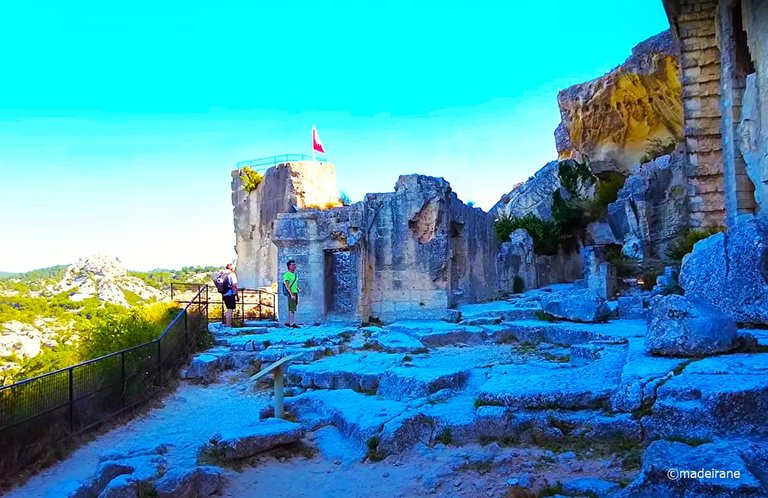
Now it's time to introduce you to the Castle of Les Baux, which I already mentioned in my review of the city of Les Baux de Provence. You can walk along the narrow medieval streets of Les Baux de Provence in my review. And today, I want to tell you about Les Baux Castle, after which this city was named. After all, we came to this town partly to visit the castle, since we really love going on excursions to castles and where there is such an opportunity, we never deny ourselves the pleasure.
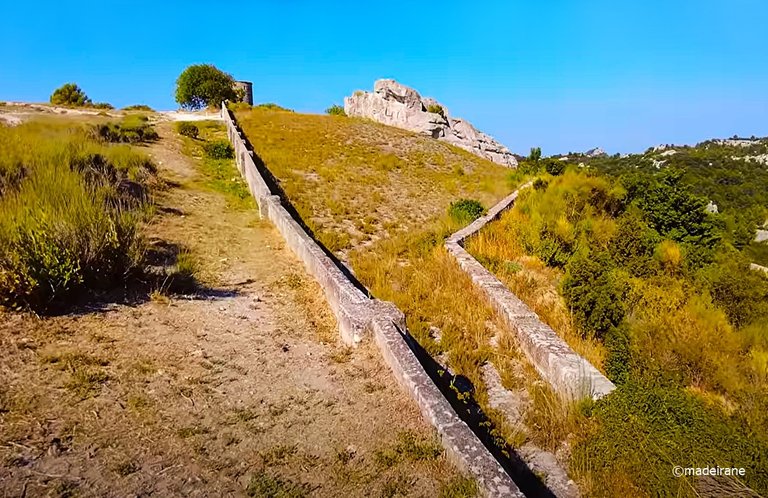
Like all castles in this region, Le Baux Castle is located on a mountain. It is an impregnable fortress on the side of the road that runs near the city. From the outside, it is immediately obvious that it used to be an impregnable fortress, and now its ruins stand on the mountain. It's amazing how people used the local terrain and mountains well and made a castle on a mountain, where part of the walls are a mountain.
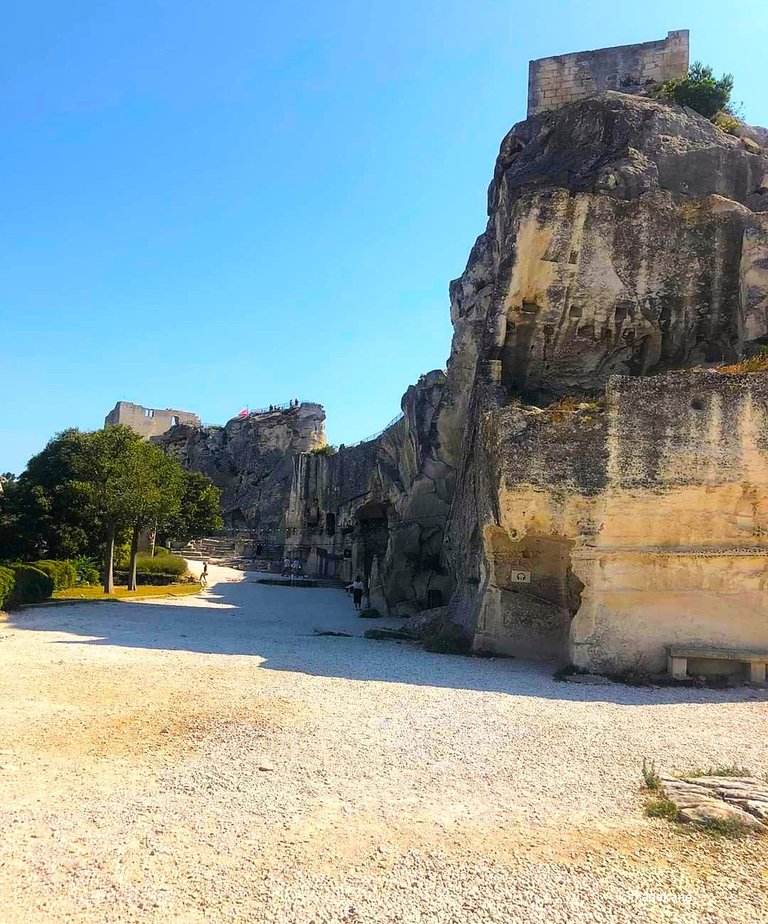
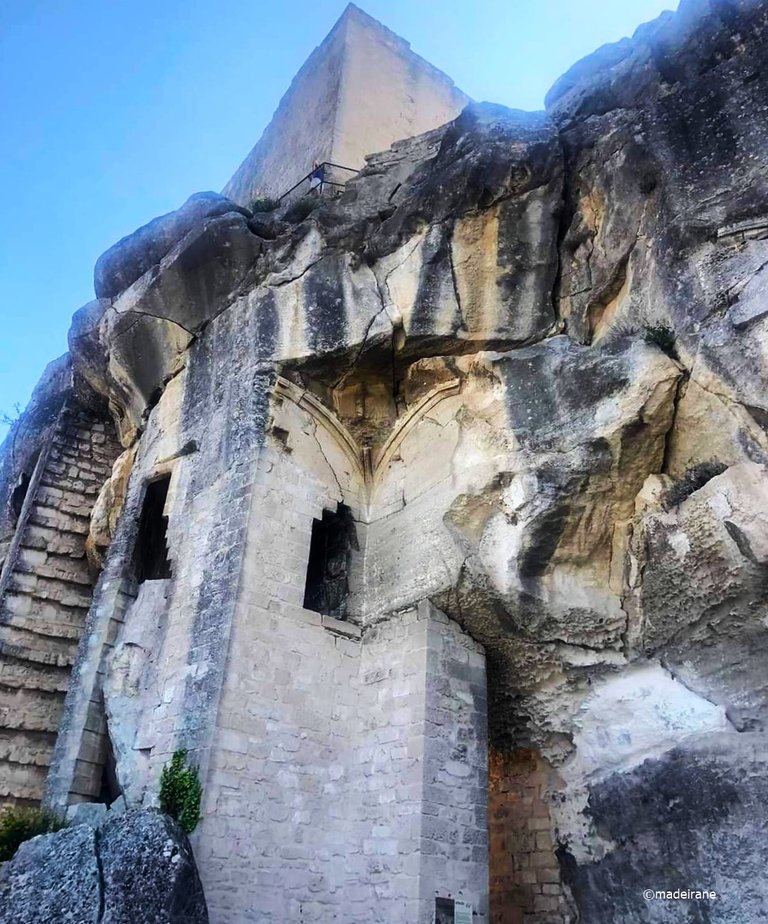
We first needed to walk along the streets of the city, climbing the mountain on foot, and only then, we reached the castle. Entry into the city by car is prohibited, only local residents who live in the city can.
Near the entrance, as is usually the case, you can buy not only tickets but also various souvenirs on the theme of the castle and the town. Since we really wanted to see not only the castle of Le Baux, but also the show in the former Lumiere quarries, we bought combined tickets.
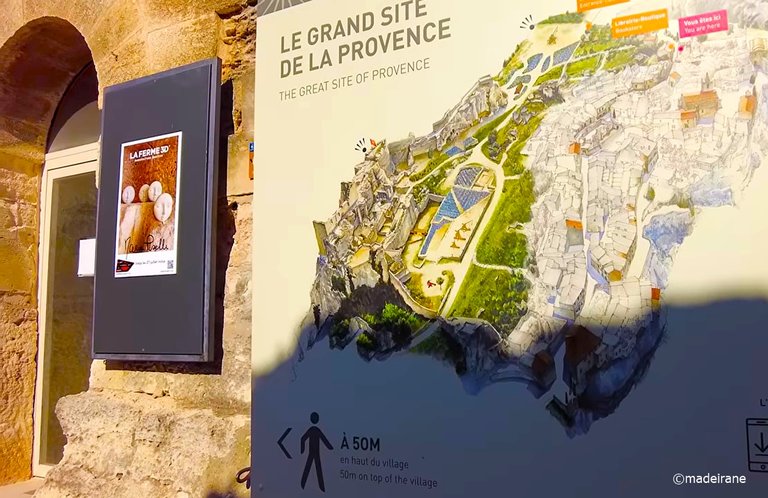
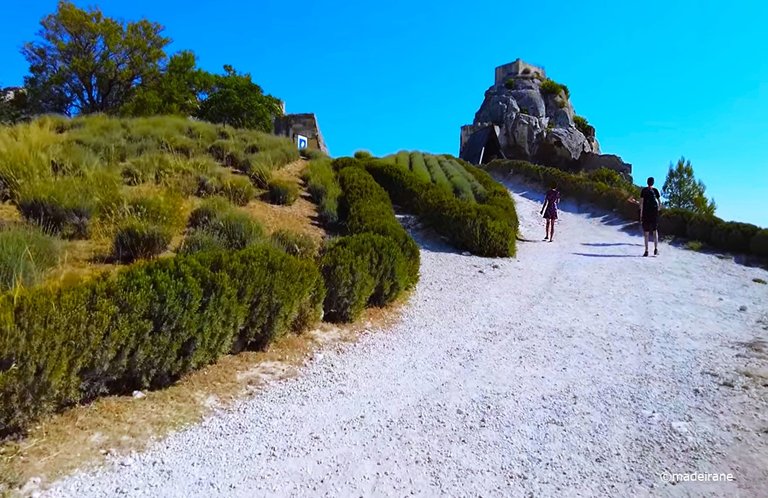
The first thing we see in the space of Baux castle is several whole buildings. And this is even surprising, because we did not expect to see anything except ruins, and the first thing we saw when we came to the castle space were those buildings. Although, as it turned out later, upon closer examination, these are the only buildings on the territory that were restored. The rest remained in the form in which they reached us.
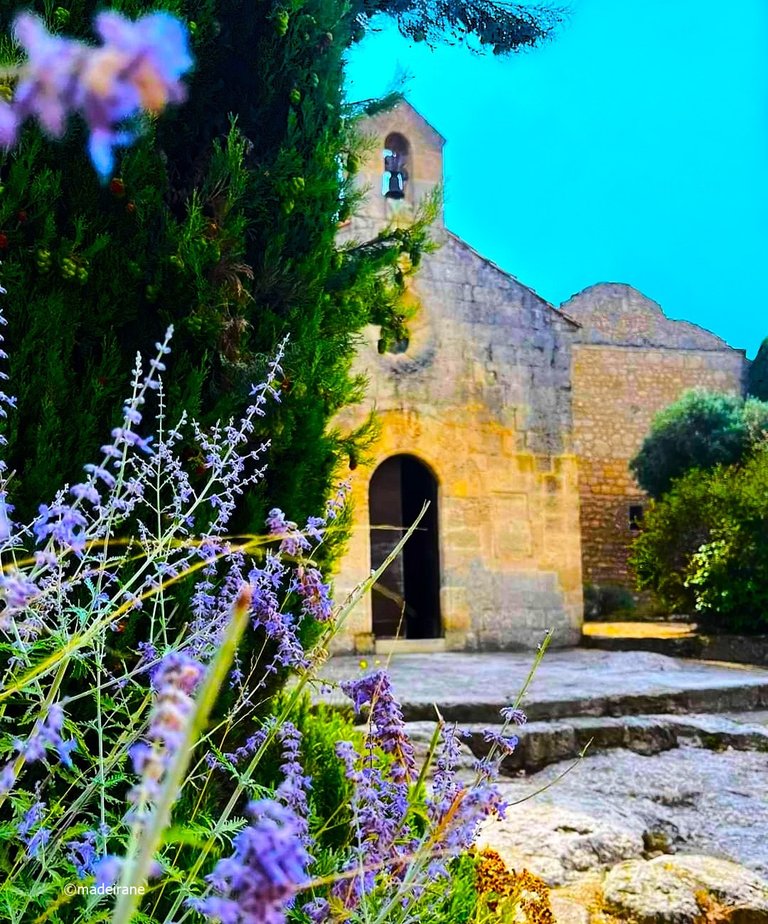
The castle grounds are large, larger than the town of Les Baux de Provence itself. When we walked around the castle, we took an audio guide. They told us the history of the castle in detail.

The first mentions of a castle on this site in official documents date back to 918. But its development and main construction took place much later, during the Middle Ages. The owner of the castle was the most famous family of Le Baux. The castle and the village near it were named after this family. In its best years, the population of the city of Les Baux de Provence was about 4,000 people, now 420. But this always happens when a castle, the foundation of the entire city, falls into disrepair or is destroyed.


We were impressed not only by natural beauty of surroundings, we were also impressed by the history of the citadel. The life credo of the lords of Baux, who called themselves the "eagle dynasty", was never to be anyone's vassals. They were not only rich, but also proud and powerful people with big ambitions. They played leading roles in the political life of Provence too. And the chances of enemies taking over the fortress were zero.
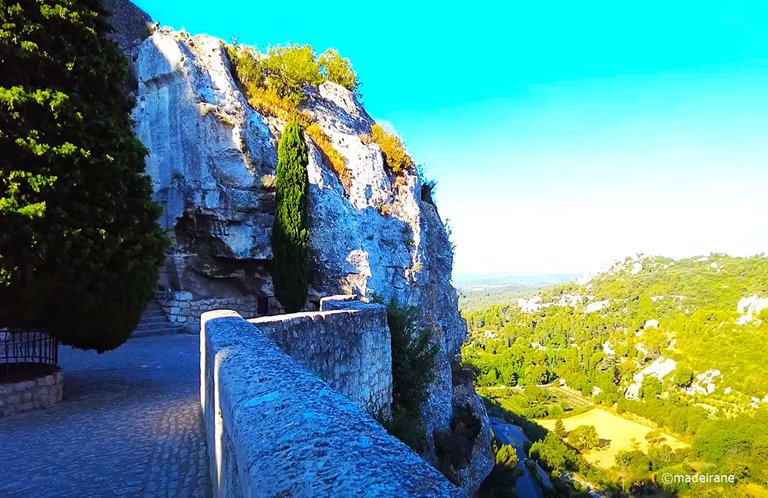
We began to admire the cleverness of the choice of location for the fortress even before we appeared in this tourist anthill. These ancient people were able to subdue nature and make its walls livable and protect their territory. Since the castle was impregnable and was taken only by a long siege.
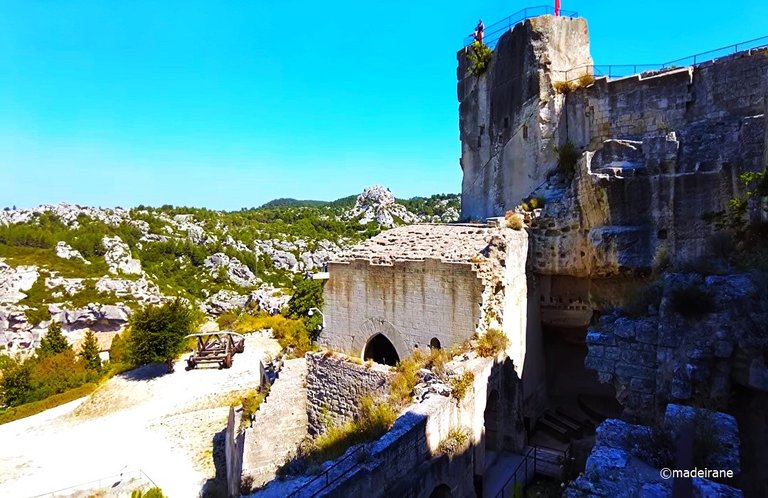
The castle of Les Baux was famous for its troubadour tournaments. It played beautiful melodies and poems dedicated to beautiful ladies... But the courtly era ended, the male line of the Baux family was interrupted, and Provence lost its independence and became an ordinary French province. In the 15th century, during the reign of Louis XI, the "eagle's nest" was partially destroyed - as a preventive measure against a region that was potentially capable of rebellion.

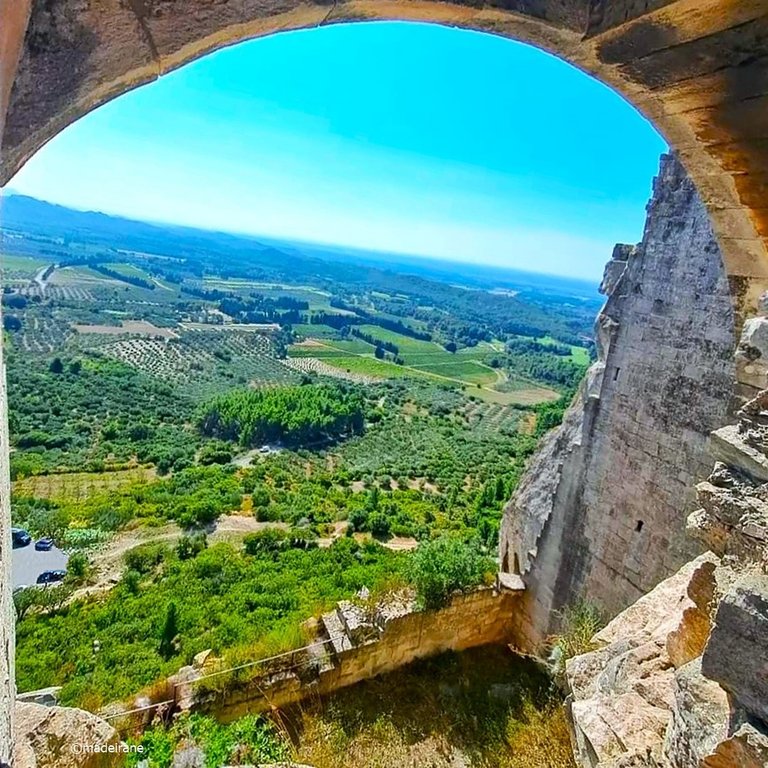
But the most terrible days in the biography of Les Baux came in the 17th century, when religious wars were going on in France, and the Huguenot rebellion against Louis XIII broke out in Provence. Some of the rebels, retreating under the onslaught of the royal troops, hold the defense in the castle. The 27-day siege ended with the defeat of the Protestants, and Cardinal Richelieu ordered the fortress to be destroyed to the ground. And local residents with pickaxes were involved in this process. As a result, people left their native places. Some of the former residents of Les Baux settled on the slope of the cliff, some on the drained swamps, and some left for other cities and towns.
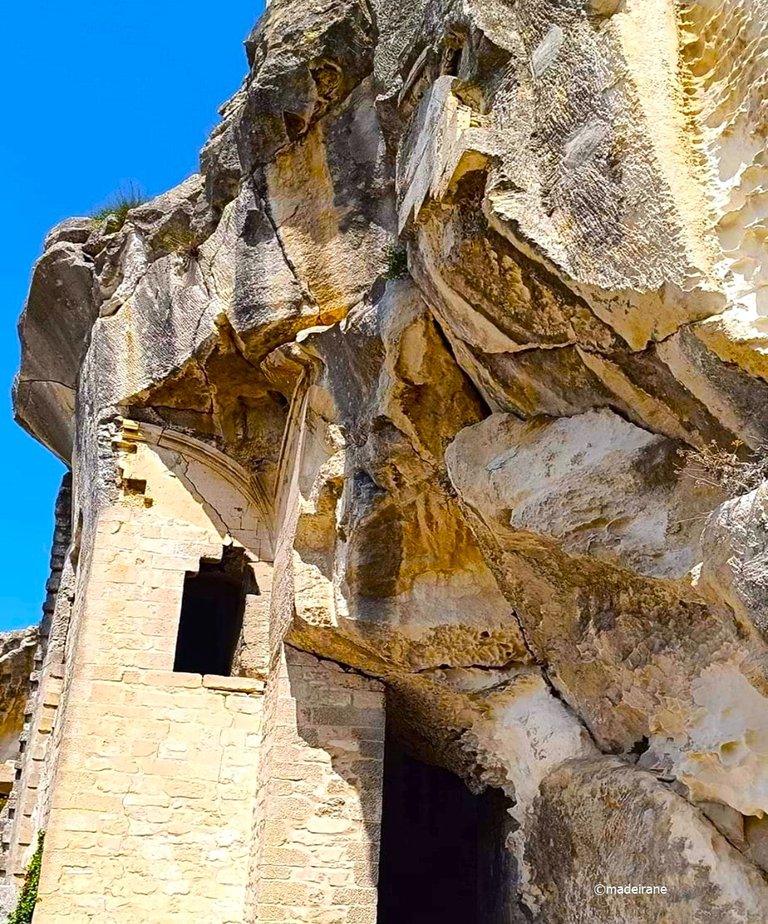
Next to each ruined building there is a picture of what it looked like in the best years of the castle. And also a description, but to do this you need to know either French or English.
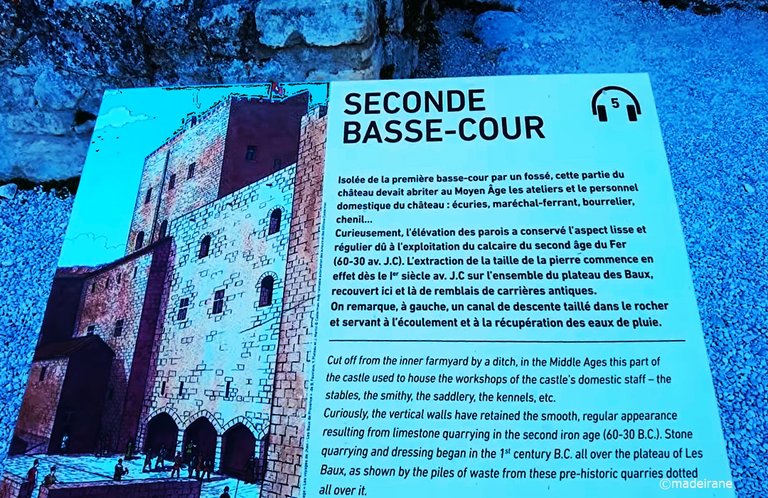
There is also the hospital building, which was built in the 16th century with charitable donations from people in the city. Moreover, most of the donations were not money, but goods. The Charity House, as it was originally conceived, existed for a long time exclusively on donations from individuals. Many of these donations were passed down from generation to generation and were paid for centuries. And only in the 18th century, when there were no funds left to maintain this House of Mercy, it was moved to another hospital in Mossan.
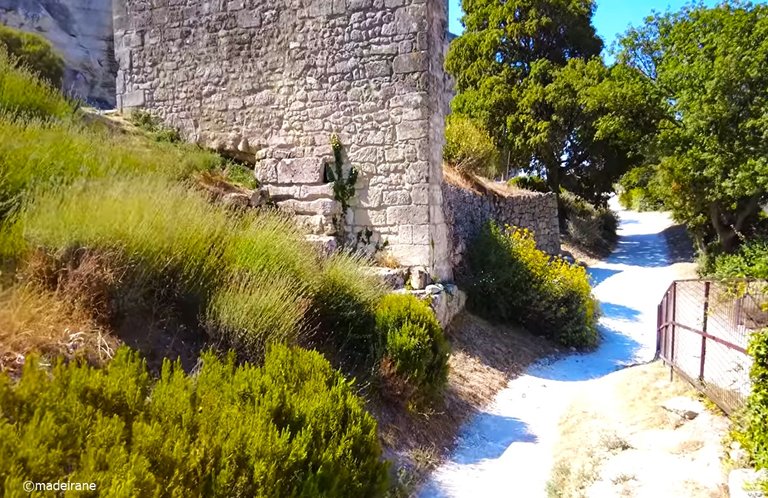

Is there any point in visiting the ruins of castle? For me, the answer to this question sounds affirmative. These ruins are like a symbol of the spirit of Provence, the original land of knights and troubadours, like a requiem for courageous people who heroically fought for their ideals until their last breath.

But the most convincing argument in favor of visiting the castle is the golden collection of views that open up from here. With fields, gardens, olive groves, vineyards, village houses and lavender growing near the ruins. Such landscapes are accessible only from its territory.
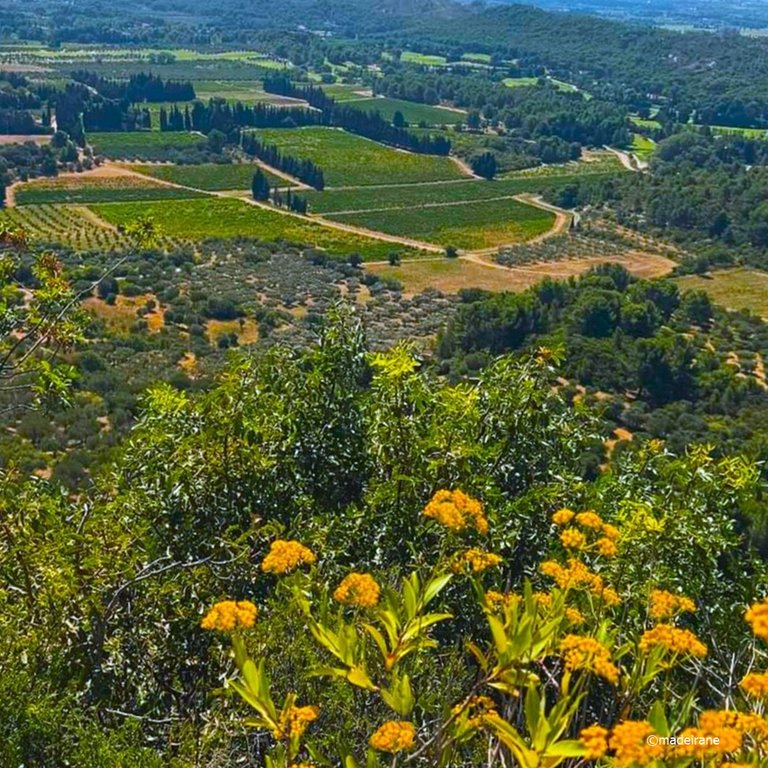
The castle of Les Baux is also famous for its shows, regularly organized in summer for tourists. In its territory, there are replicas of medieval throwing weapons - trebuchets, bricolages, couillard siege weapons and ballista. Stone cannonballs were used to fire such weapons. Trebuchets, bricolages and ballista were used to besiege cities, and the couillard was usually used against infantry. True, I was most interested in the operating principles of the first two types of weapons.
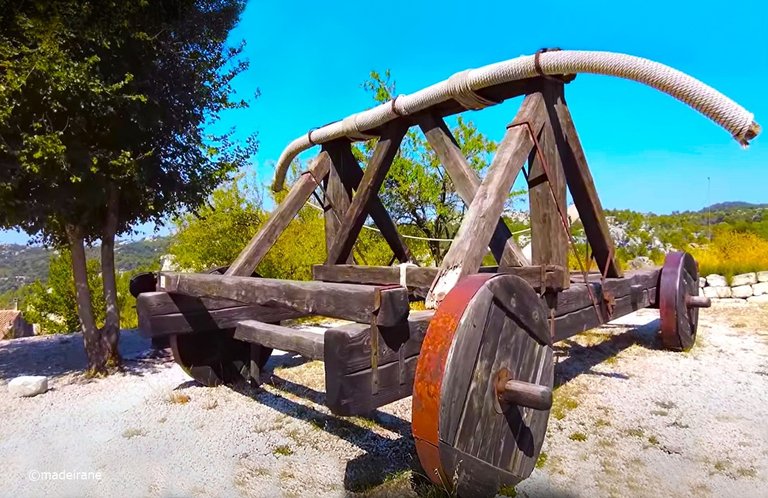
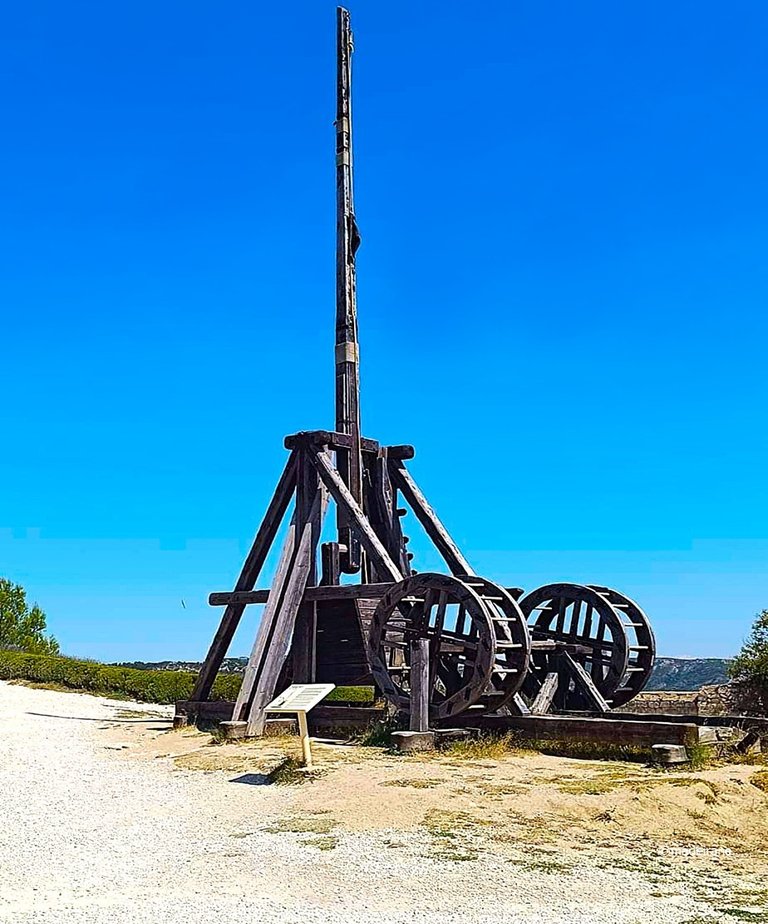
In fact, I did not expect such an interesting excursion from the castle ruins. Meanwhile, we approached the courtyard with houses. Since the castle was constantly under siege, of course there were houses and farming on the castle grounds, which ensured the life of the castle under siege.

Previously, walls were attached to this rock and these were people's houses. Who managed resources very wisely? Almost every house had small containers for rainwater, which flowed down special gutters along the walls.
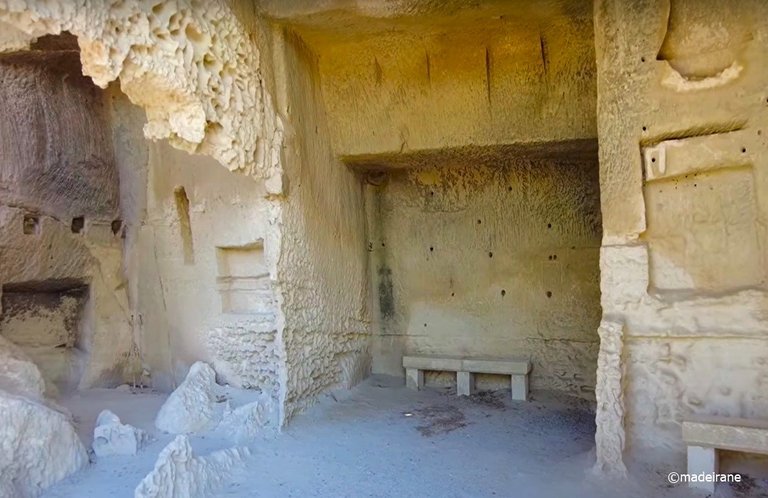
It's amazing to look at these ruins and imagine that life was once in full swing here and people lived here. And they lived quite well.

On the one hand, this is an amazing place and very interesting. On the other hand, it is quite a scary excursion. Because the stairs in many places are almost worn out. Therefore, if you are going on this excursion, be sure to wear comfortable shoes and take water.
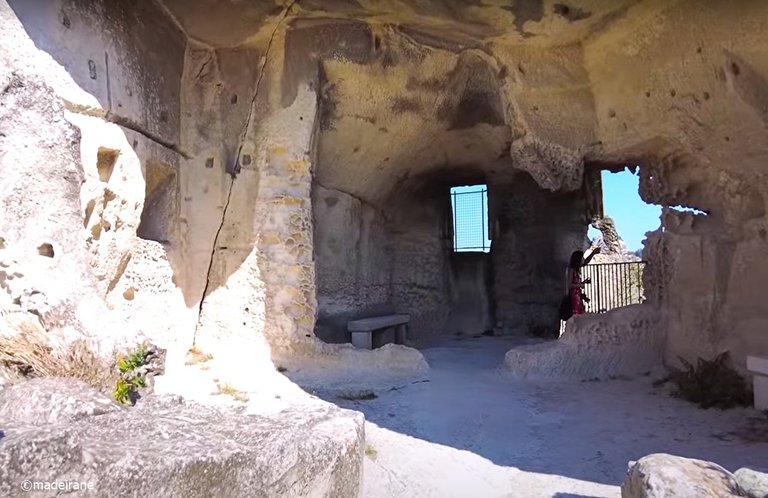
In its best days, the castle of Baux was a beautiful, huge and stately castle-fortress with impregnable walls and developed infrastructure. And this is what the castle looks like today, or rather all that remains of the castle.
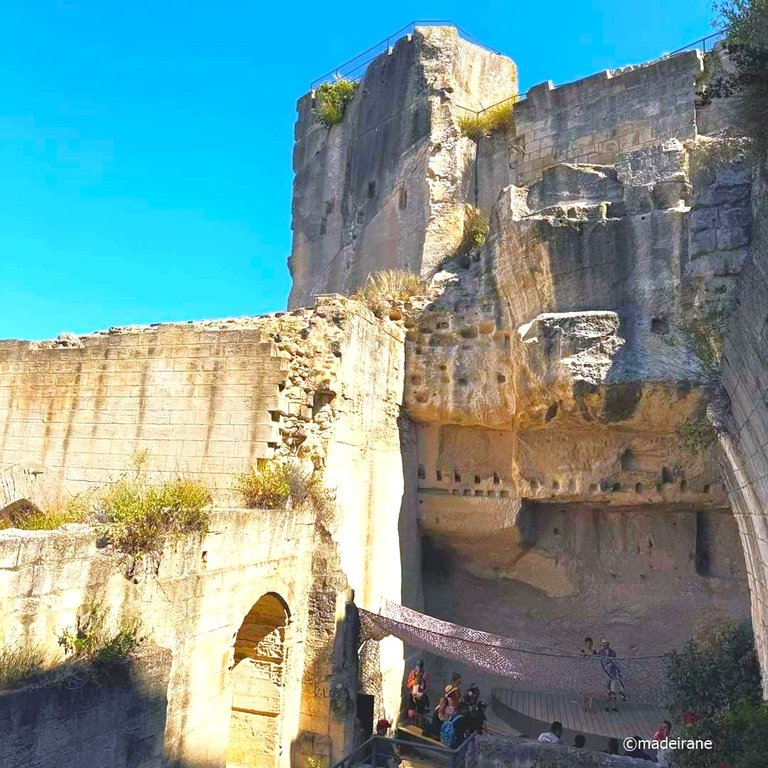
By the way, another interesting fact is that in the castle in its best years there lived more than 2,000 carrier pigeons, and for each pigeon nests were carved out in the rock wall, which can still be seen today.
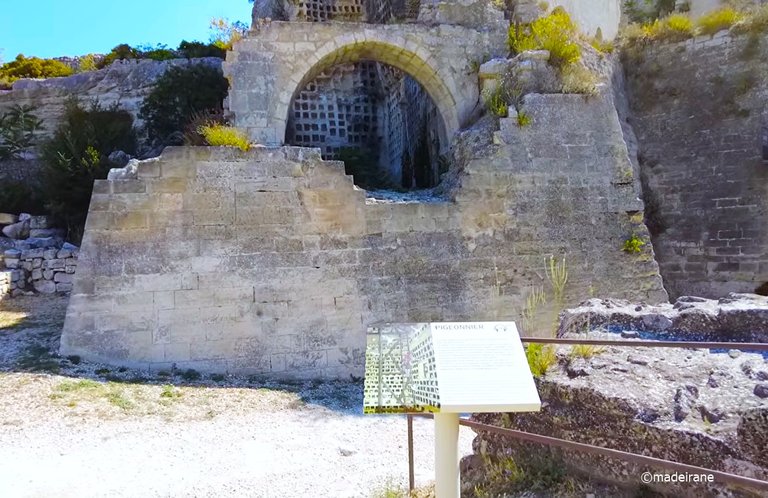

Ruins of former greatness. Today, the castle hosts many costumed performances and shows how ancient weapons work. We, in turn, did not stay until the evening, but went on our way. But it was a magnificent excursion. Of course, photos cannot describe the emotions we experienced in person.
💝💝💝💝💝💝💝💝💝💝
With love, @madeirane
Photos are taken by me.
© 2024
Translated from Lithuanian with DeepL.com (free version).
Dabar metas pristatyti Les Baux pilį, kurią jau minėjau Les Baux de Provanso miesto apžvalgoje. Pasivaikščioti siauromis viduramžių gatvelėmis Les Baux de Provence galite mano apžvalgoje. O šiandien noriu papasakoti apie Les Baux pilį, kurios vardu ir pavadintas šis miestas. Juk į šį miestelį atvykome iš dalies tam, kad aplankytume pilį, nes labai mėgstame vykti į ekskursijas po pilis, o kai yra tokia galimybė, niekada neatsisakome šio malonumo.
Kaip ir visos šio regiono pilys, Le Baux pilis yra ant kalno. Tai neįveikiama tvirtovė šalia kelio, einančio netoli miesto. Iš išorės iš karto matyti, kad tai buvo neįveikiama tvirtovė, o dabar ant kalno stūkso jos griuvėsiai. Nuostabu, kaip žmonės puikiai išnaudojo vietos reljefą ir kalnus ir ant kalno pastatė pilį, kurios dalis sienų yra kalnas.
Pirmiausia reikėjo pasivaikščioti miesto gatvėmis, pėsčiomis užkopti į kalną, ir tik tada pasiekėme pilį. Įvažiuoti į miestą automobiliais draudžiama, gali tik mieste gyvenantys vietos gyventojai.
Prie įėjimo, kaip paprastai, galima nusipirkti ne tik bilietų, bet ir įvairių suvenyrų pilies ir miesto tema. Kadangi labai norėjome pamatyti ne tik Le Baux pilį, bet ir parodą buvusiuose Lumiere karjeruose, nusipirkome kombinuotus bilietus.
Pirmas dalykas, kurį pamatome Baux pilies erdvėje, yra keli ištisi pastatai. Ir tai net stebina, nes nesitikėjome pamatyti nieko, išskyrus griuvėsius, o pirmas dalykas, kurį pamatėme atėję į pilies erdvę, buvo tie pastatai. Nors, kaip paaiškėjo vėliau, atidžiau įsižiūrėjus, tai vieninteliai teritorijoje esantys restauruoti pastatai. Likusieji liko tokie, kokie mus pasiekė.
Pilies teritorija didelė, didesnė už patį Les Baux de Provence miestelį. Kai vaikščiojome po pilį, naudojomės audiogidu. Jie mums išsamiai papasakojo pilies istoriją.
Pirmą kartą pilis šioje vietoje oficialiuose dokumentuose paminėta 918 metais. Tačiau jos plėtra ir pagrindinė statyba vyko daug vėliau, viduramžiais. Pilies savininkas buvo garsiausia Le Baux šeima. Šios šeimos vardu pavadinta pilis ir šalia jos esantis kaimas. Geriausiais metais Les Baux de Provanso mieste gyveno apie 4000 žmonių, dabar - 420. Tačiau taip atsitinka visada, kai pilis, viso miesto pamatas, sunyksta arba yra sugriaunama.
Mus sužavėjo ne tik gamtos grožis, bet ir citadelės istorija. Baux valdovų, kurie save vadino „erelių dinastija“, gyvenimo credo buvo niekada nebūti kieno nors vasalais. Jie buvo ne tik turtingi, bet ir išdidūs bei galingi žmonės, turintys didelių ambicijų. Jie vaidino pagrindinį vaidmenį ir politiniame Provanso gyvenime. O tikimybė, kad priešai užims tvirtovę, buvo lygi nuliui.
Dar prieš atsirasdami šiame turistų skruzdėlyne ėmėme žavėtis tvirtovės vietos pasirinkimo gudrumu. Šie senovės žmonės sugebėjo pajungti gamtą, padaryti jos sienas gyvybingas ir apsaugoti savo teritoriją. Kadangi pilis buvo neįveikiama, ją užimti pavykdavo tik per ilgą apgultį.
Les Baux pilis garsėjo trubadūrų turnyrais. Jame skambėjo gražios melodijos ir poemos, skirtos gražioms damoms... Tačiau dvarų epocha baigėsi, nutrūko Baux giminės vyriškoji linija, Provansas prarado nepriklausomybę ir tapo eiline Prancūzijos provincija. XV a., valdant Liudvikui XI, „erelio lizdas“ buvo iš dalies sunaikintas - kaip prevencinė priemonė prieš potencialiai maištauti galintį regioną.
Tačiau baisiausios Les Baux biografijos dienos atėjo XVII a., kai Prancūzijoje vyko religiniai karai, o Provanse kilo hugenotų sukilimas prieš Liudviką XIII. Dalis sukilėlių, atsitraukdami nuo karališkųjų karių puolimo, laikosi gynybos pilyje. 27 dienas trukusi apgultis baigėsi protestantų pralaimėjimu, o kardinolas Rišeljė įsakė tvirtovę sugriauti iki pamatų. Į šį procesą įsitraukė ir vietos gyventojai su kirtikliais. Dėl to žmonės paliko savo gimtąsias vietas. Kai kurie buvę Les Baux gyventojai apsigyveno uolos šlaite, kai kurie - nusausintose pelkėse, o kai kurie išvyko į kitus miestus ir miestelius.
Šalia kiekvieno sugriauto pastato yra nuotrauka, vaizduojanti, kaip jis atrodė geriausiais pilies gyvavimo metais. Taip pat ir aprašymas, tačiau tam reikia mokėti prancūzų arba anglų kalbą.
Viršuje ir apačioje esančiose nuotraukose matote ligoninės pastatą, kuris buvo pastatytas XVI a. už miesto gyventojų labdarą. Be to, dauguma aukų buvo ne pinigai, o prekės. Labdaros namai, tokie, kokie buvo sumanyti iš pradžių, ilgą laiką gyvavo tik iš pavienių asmenų aukų. Be to, daugelis šių aukų buvo perduodamos iš kartos į kartą ir buvo mokamos šimtmečius. Ir tik XVIII a., kai nebeliko lėšų šiems Gailestingumo namams išlaikyti, jie buvo perkelti į kitą ligoninę Mosane.
Ar yra prasmė lankytis pilies griuvėsiuose? Man atsakymas į šį klausimą skamba teigiamai. Šie griuvėsiai yra tarsi Provanso, pirmapradžio riterių ir trubadūrų krašto, dvasios simbolis, tarsi requiem drąsiems žmonėms, kurie didvyriškai kovojo už savo idealus iki paskutinio atodūsio.
Tačiau pats įtikinamiausias argumentas už apsilankymą pilyje yra auksinė kolekcija vaizdų, kurie atsiveria iš čia. Šalia griuvėsių auga laukai, sodai, alyvmedžių giraitės, vynuogynai, kaimo namai ir levandos. Tokie kraštovaizdžiai pasiekiami tik iš jos teritorijos.
Les Baux pilis taip pat garsėja savo spektakliais, vasarą reguliariai rengiamais turistams. Jos teritorijoje yra viduramžių svaidomųjų ginklų - trebušetai, brikolažai, akmeniniai patrankų sviediniai ir balistos - kopijos. Šiems ginklams šaudyti buvo naudojami akmeniniai patrankų sviediniai. Trebušetai, brikolažai ir balista buvo naudojami miestams apgulti, o akmeniniai patrankų sviediniai dažniausiai buvo naudojamas prieš pėstininkus. Tiesa, mane labiausiai domino pirmųjų dviejų tipų ginklų veikimo principai.
Tiesą sakant, tokios įdomios ekskursijos iš pilies griuvėsių nesitikėjau.
Tuo tarpu mes artėjame prie pačios pilies ir kiemo su namais. Kadangi pilis buvo nuolat apgulta, žinoma, pilies teritorijoje stovėjo namai ir buvo ūkininkaujama, kas užtikrino apgultos pilies gyvybę.
Anksčiau prie šios uolos buvo pritvirtintos sienos, o tai buvo žmonių namai. Kas labai išmintingai valdė išteklius? Beveik kiekviename name buvo nedidelės talpyklos lietaus vandeniui, kuris tekėjo specialiais latakais palei sienas.
Nuostabu žiūrėti į šiuos griuvėsius ir įsivaizduoti, kad kadaise čia virė gyvenimas ir gyveno žmonės. Ir gyveno gana gerai. Viena vertus, tai nuostabi ir labai įdomi vieta. Kita vertus, tai gana bauginanti ekskursija. Nes daugelyje vietų laiptai beveik nusidėvėję. Todėl jei vykstate į šią ekskursiją, būtinai apsiaukite patogią avalynę ir pasiimkite vandens.
Savo geriausiais laikais Baux pilis buvo graži, didžiulė ir didinga pilis-tvirtovė su neįveikiamomis sienomis ir išvystyta infrastruktūra. Taip pilis atrodo šiandien, tiksliau, viskas, kas iš jos liko.
Beje, dar vienas įdomus faktas - pilies geriausiais metais joje gyveno daugiau kaip 2000 pašto balandžių, o kiekvienam balandžiui uolos sienoje buvo iškalti lizdai, kuriuos galima pamatyti ir šiandien.
Buvusios didybės griuvėsiai. Šiandien pilyje vyksta daugybė kostiumuotų pasirodymų ir rodoma, kaip veikia senoviniai ginklai. Mes, savo ruožtu, iki vakaro nepasilikome, o išvykome toliau. Tačiau tai buvo įspūdinga ekskursija. Žinoma, nuotraukos negali aprašyti tų emocijų, kurias patyrėme asmeniškai.
Congratulations, your post has been added to WorldMapPin! 🎉
Did you know you have your own profile map?
And every post has their own map too!
Want to have your post on the map too?
The castle of Les Baux looks so beautiful, and I love some of the pictures you shared.
Sending love and curation Ecency vote. keep giving the best♥️